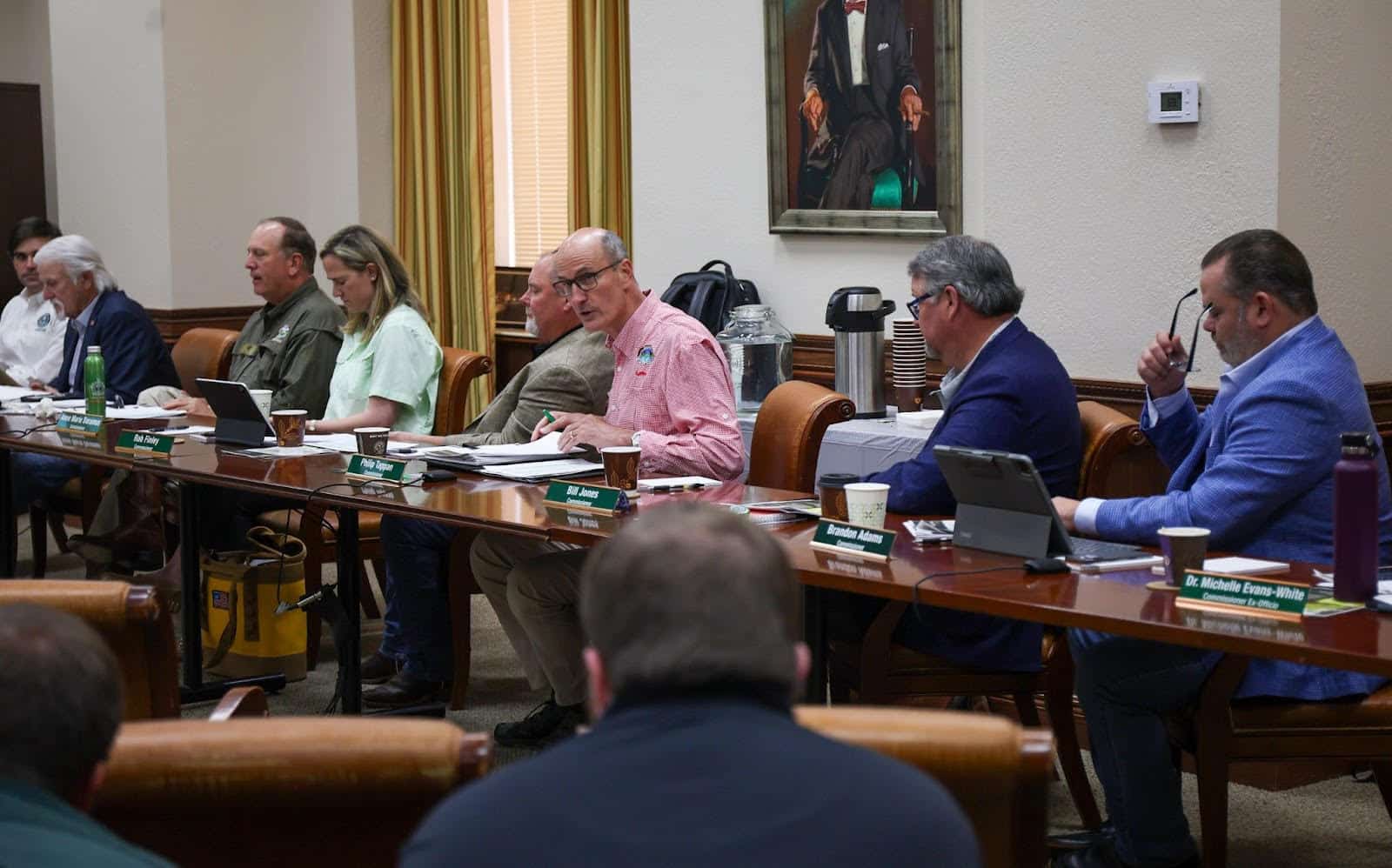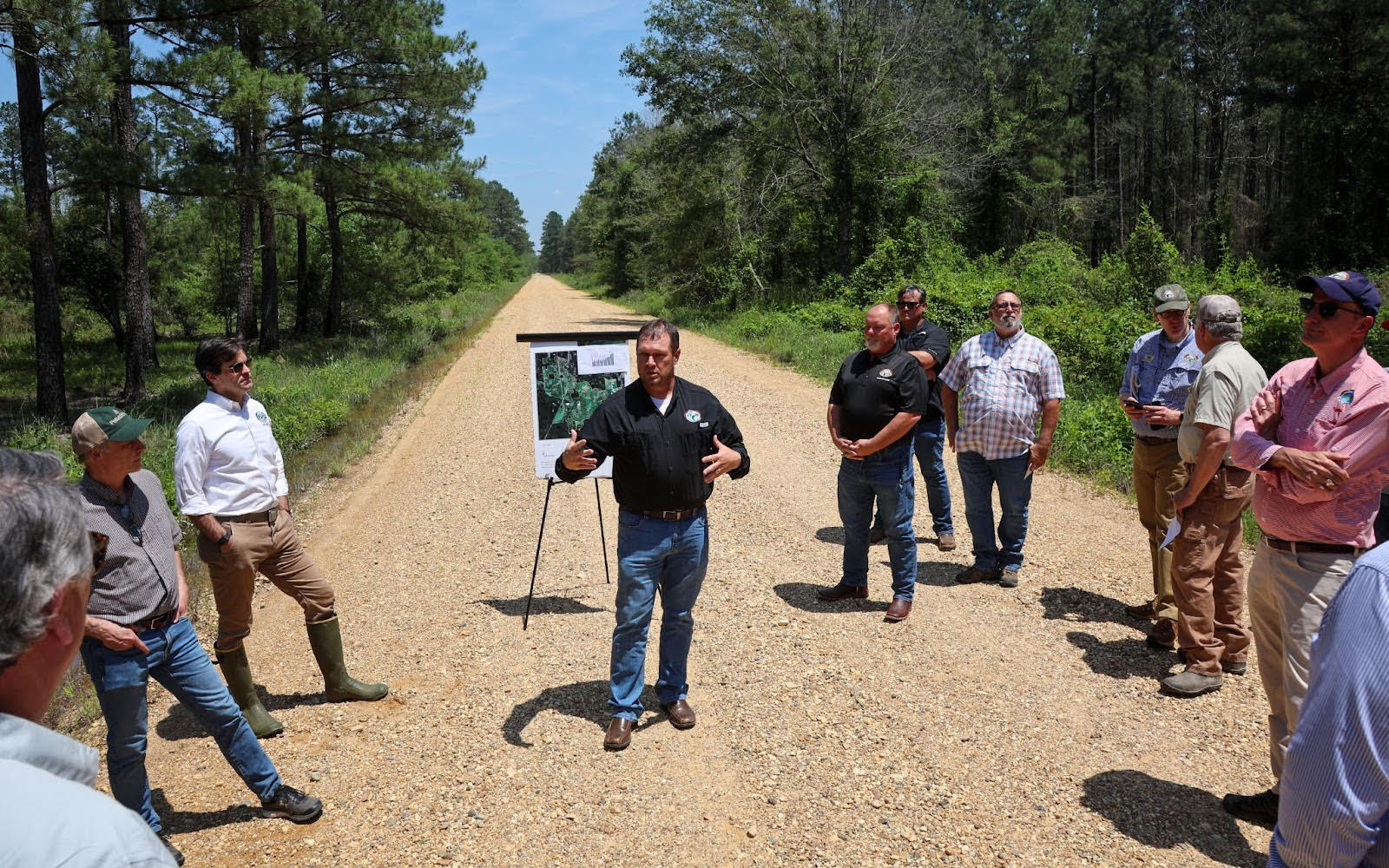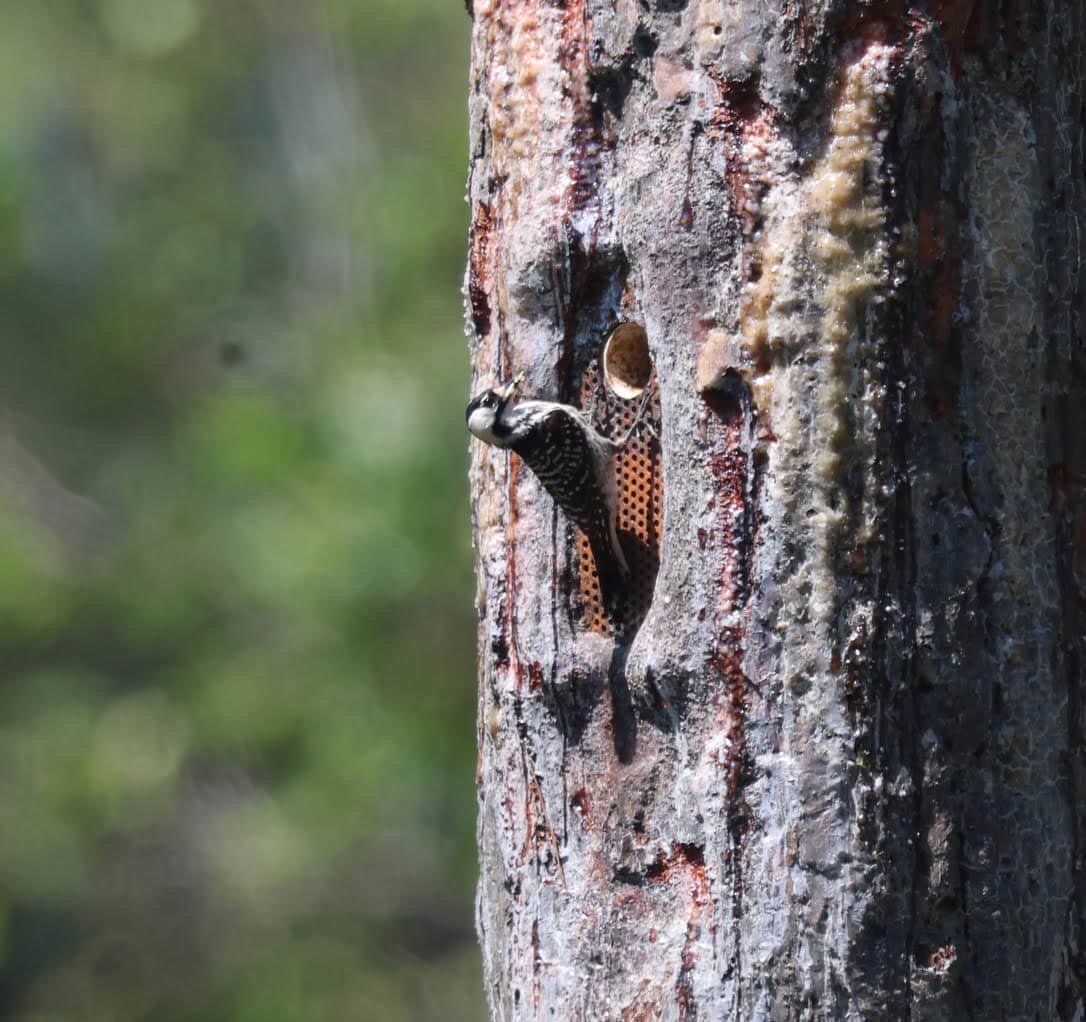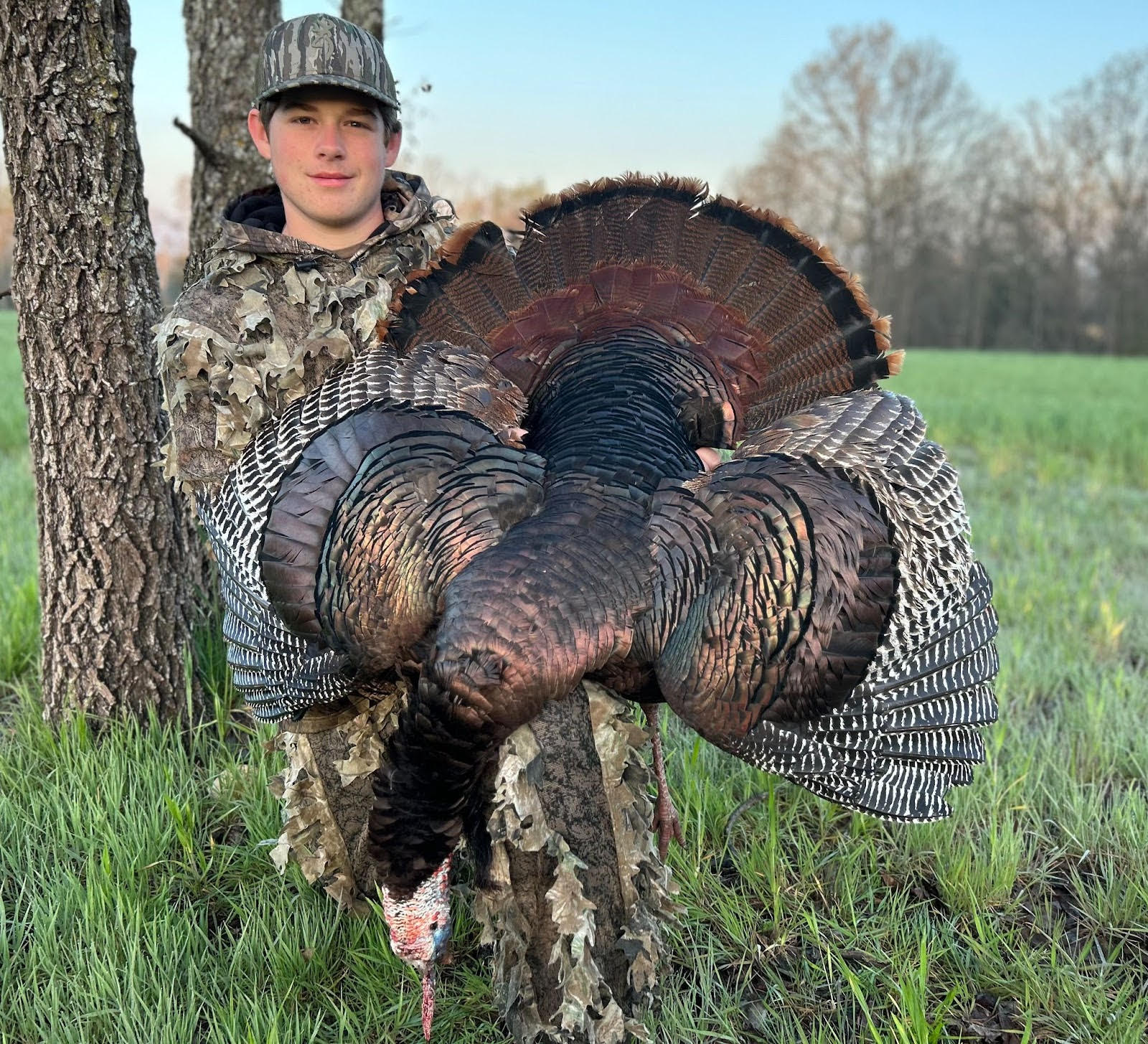Commission sets 2024-25 hunting seasons, expands hunting, angling opportunities
ON 05-17-2024

EL DORADO — The Arkansas Game and Fish Commission passed a host of regulations changes to take effect during the 2024-25 hunting season and 2025 fishing year at today’s scheduled meeting at the El Dorado Chamber of Commerce.
The changes, originally announced in February, have received healthy public comment, garnering input from more than 36,000 respondents. According to Jessica Feltz, a social scientist in the AGFC’s Research Division, more than 100,000 individual comments were collected, analyzed and sorted through the most widely distributed public comment survey in the agency’s history.
“It took a team of staff members to work through all the comments, remove duplicate entries from the same individual and put the results in a form the commissioners would be able to review,” Feltz said during a presentation at the Commission’s April meeting.

Increasing opportunities for hunters and anglers within the capability of the resource was a common theme with many regulations changes.
The establishment of a buck-only archery deer hunt in the first full weekend of September will enable hunters on private land and on Commission-owned or controlled wildlife management areas to pursue a deer still “in velvet.” Such opportunities have been available in some states, but were only briefly possible to hunters participating in controlled urban archery hunts.
Another regulation change that received healthy public support was the establishment of an alternative firearms season in lieu of Arkansas’s traditional muzzleloader season. Muzzleloaders will still be legal during this season that precedes the modern gun hunt, but hunters will be able to use modern straight-walled centerfire rifle cartridges .30 caliber or larger fired from a non-semiautomatic rifle. The change has been requested by hunters during the last few years and was moved forward by the Commission after the initial public comment survey showed strong support for the modification.
Bear hunters in northwest Arkansas continue to see increased opportunities for harvest, thanks to the strong black bear population. The archery quota for black bears in Bear Zone 1 will see an increase to the archery hunting quota from 400 to 450 bears.
Duck hunters on AGFC-owned WMAs will again be able to use motorized decoys that create motion or simulate wing movement. This change was made to create consistency between hunters on private land and those who chase waterfowl in Arkansas’s famous public waterfowl hunting areas.
The standardization of the shell limit for duck hunting will bring more consistency on Arkansas’s waterfowl hunting WMAs. All waterfowl-focused WMAs now have a 25-shotshell limit per hunter. This is an increase of 10 shells for some WMAs, but it also establishes this limit on some WMAs where none existed before. The shell limit is intended to reduce the amount of borderline shots at waterfowl, reducing the number of unrecovered birds as well as the amount of disturbance from excessive shooting.

The AGFC’s northern bobwhite program will turn the page on a new opportunity at Stone Prairie and Little Bayou WMAs this year. with the establishment of permit-based quail hunting opportunities. Jack Mountain Leased Land WMA and Harold E. Alexander Spring River WMA will also have quail hunting opportunities, all thanks to successful rebounds of birds as a result of increased habitat management.
One of the few regulations that run countercurrent to the theme of increased opportunity is the removal of the annual Private Land Antlerless Only Modern Gun Deer Hunt. The hunt, originally established to encourage the harvest of does to balance the deer herd, has been successful in helping change the “bucks only” mindset of many traditional Arkansas hunters. Recent participation in this hunt has slowed, and biologists have seen some slight reductions in fawn recruitment. The elimination of these hunting days will enable some relief from that pressure on antlerless deer without major changes in bag limits or regular seasons.
A previously considered regulation concerning the requirement for all hunting dogs pursuing game to be outfitted with collars capable of GPS location as well as some form of remote correction was tabled after the Commission received many public comments from hunters who use dogs to pursue deer and other game. The initial regulation stemmed from continued complaints over trespassing issues by some hunters’ dogs following game on or through private property, and the Commission is still very interested in working with hunting dog groups to find a resolution to this issue without the need for more stringent regulations.
Another previously proposed regulation that was tabled at today’s meeting was a possible reduction of the daily bag limit on mallard hens to one bird per day. Commissioners explained during Wednesday’s business meeting that they consistently want to ground in science any decisions restricting any opportunities and they wished to wait until the results of this year’s Waterfowl Breeding Population and Habitat Survey are available from the U.S. Fish and Wildlife Service before making any decisions on bag limit reductions.

During his address to the Commission, AGFC Director Austin Booth reflected on the lessons learned from a trip to nearby Moro Big Pine Natural Area WMA Wednesday. The area is a result of a partnership between the AGFC, the Arkansas Natural Heritage Commission, The Nature Conservancy and Potlatch Deltic Timber. It also is home to a thriving population of federally endangered red-cockaded woodpeckers, which commissioners and staff had a chance to view firsthand during a trip to the area.
“We can learn from Moro Big Pine lots of things, one of which is the importance of partnerships in conservation,” Booth said. “I learned that when a red-cockaded woodpecker seeks to make a cavity in a tree, it can take as much as nine years for that woodpecker to make a home in that tree. That woodpecker isn’t just doing it by himself or herself. Multigenerational groups of these woodpeckers work to make that home in the tree. We as people want what we want, when we want it. We are often most instantly gratified by what’s immediately in front of us. The reality is that more often than not, the successes we make are made as we string together through days, weeks, months and even generations.”

Today’s regulations package also included the dates for the 2024-25 hunting seasons, which will be as follows:
Deer
Early Buck Archery Hunt
Sept. 7-9
Archery Deer
Sept. 28-Feb. 28
Alternative Firearms (formerly muzzleloader season)
Zones 1, 2, 3, 6, 7, 8, 10 and 11 — Oct. 19-27 and Dec. 14-16
Zones 4A, 5A, 14 and 15 — Oct. 19-27 and Dec. 21-23
Zones 9, 12, 13, 16, 16A and 17: Oct. 19-27
Modern Gun
Zones 1, 2, 3, 6, 7, 8, 10 and 11: Nov. 9-Dec. 1 and Dec. 26-28
Zones 4A, 5A, 14 and 15: Nov. 9-Dec. 8 and Dec. 26-28
Zones 4 and 5: Nov. 9-17 and Dec. 26-28
Zones 9, 12 and 13: Nov. 9-Dec. 15 and Dec. 26-28
Zones 16, 16A and 17: Nov. 9-Dec. 28
Youth Modern Gun Deer
Nov. 2-3 and Jan. 4-5
Bear
Archery (Zones 1 and 2 only)
Sept. 18-Nov. 30
Alternative Firearms (formerly muzzleloader season) (Zones 1 and 2 only)
Oct. 19-27
Special Youth Modern Gun Bear Hunt (Zones 1 and 2 only)
Nov. 2-3
Modern Gun
Bear Zones 1 and 2 — Nov. 9-30
Bear Zone 3, 4, 5, and 5A — Dec. 21-27
Waterfowl
Special Early Teal Season — Sept. 15-30
Duck, Coot and Merganser — Nov. 23-Dec. 2, Dec. 10-23 and Dec. 27, 2024-Jan. 31, 2025
Special Youth Waterfowl Hunt — Feb. 8-9, 2025
Special Active Duty Military and Veteran Hunt — Feb. 9, 2025
White-fronted, Snow, Blue and Ross’s Goose — Oct. 26-Nov. 3, Nov. 23-Dec. 2, Dec. 10-23 and Dec. 27-Jan. 31
Canada Goose — Sept. 1-Oct. 15, Nov. 23-Dec. 2, Dec. 10-23 and Dec. 27-Jan. 31
Light Goose Conservation Order (Snow, Blue and Ross’s Goose) — Feb. 1-7, Feb. 10-April 25
Early Migratory Birds
Dove (Mourning, White-winged and Eurasian collared-dove) — Sept. 7-Oct. 27 and Dec. 8-Jan. 15
Virginia Rail and Sora — Sept. 14-Nov. 22
Common and Purple Gallinule — Sept. 1-Nov. 9
Wilson’s Snipe — Nov. 1-Feb. 15
Woodcock — Nov. 2-Dec. 16
Small Game
Quail — Nov. 1-Feb. 1
Rabbit — Sept. 1-Feb. 28
Squirrel — May 15-Feb. 28
In other business, the Commission:
-
Heard the first reading of a regulation to set the seasonal turkey limit at one bird for all nonresidents including youth hunters. [CLICK FOR PRESENTATION]
-
Authorized Director Booth to complete the purchase of 320 acres of property adjacent to Scott Henderson Gulf Mountain WMA. [CLICK FOR PRESENTATION]
-
Heard a presentation from Ryan Farney, AGFC Feral Hog Program coordinator, with an update on the continued progress of the Arkansas Feral Hog Eradication Task Force. [CLICK FOR PRESENTATION]
-
Recognized Stephen Kelly, a local hunter and angler, who briefed the Commission about how the outdoors in southern Arkansas helped shape his life. [CLICK FOR PRESENTATION]
-
Recognized Don Miller, a representative of Murphy USA and the city of El Dorado, who welcomed the Commision with a presentation of opportunities available in the city and the many amenities provided to improve quality of life and education opportunities for El Dorado residents and visitors. [CLICK FOR PRESENTATION]
-
Authorized the removal of a stolen temporary carport from agency inventory. [CLICK FOR PRESENTATION]
-
Approved a minute order to update the AGFC’s volunteer policy in the AGFC Policy and Procedures Manual. [CLICK FOR PRESENTATION]
-
Awarded retiring game warden Sgt. John Crissman his service sidearm for 25 years of service to the AGFC. [CLICK FOR PRESENTATION]
A complete video of the meeting is available at the AGFC’s YouTube Channel.
####
CUTLINES:
COMMISSION AT TABLE
Commissioners passed the regulations to set the 2024-25 hunting seasons and 2025 fishing regulations at Thursday’s meeting in El Dorado.
MEN SEATED
Members of the Arkansas General Assembly spoke with Commissioners and constituents Thursday about combined efforts to pass the AGFC’s budget. From Left to Right: Arkansas Speaker of the House Matthew Sheppard, Rep. Jeffrey Wardlaw, and Rep. Wade Andrews, and Howard Beaty, Jr.
GROUP ON GRAVEL ROAD
AGFC Deputy Director Brad Carner explains how many agencies came together to create Moro Big Pine Natural Area WMA for hunters and wildlife.
MAN AT LECTERN
AGFC Director Austin Booth spoke about the power of partnerships and working together toward a common goal in Thursday’s address to the Commission.
BIRD ON TREE
One of many endangered red cockaded woodpeckers that thrive on Moro Big Pine Natural Area WMA with the help of habitat work and artificial nest sites.
Recent News

AGFC Commissioner Meeting Notice
Apr. 15, 2025
Subscribe to Our Weekly Newsletter E-mails
Don’t miss another issue. Sign up now to receive the AGFC Wildlife Weekly Newsletter in your mailbox every Wednesday afternoon (Waterfowl Reports are published weekly during waterfowl season and periodically outside the season). Fishing Reports arrive on Thursdays. Fill in the following fields and hit submit. Thanks, and welcome!

